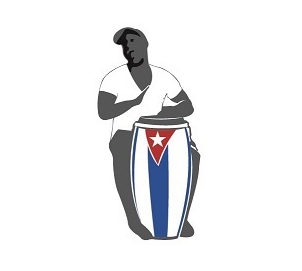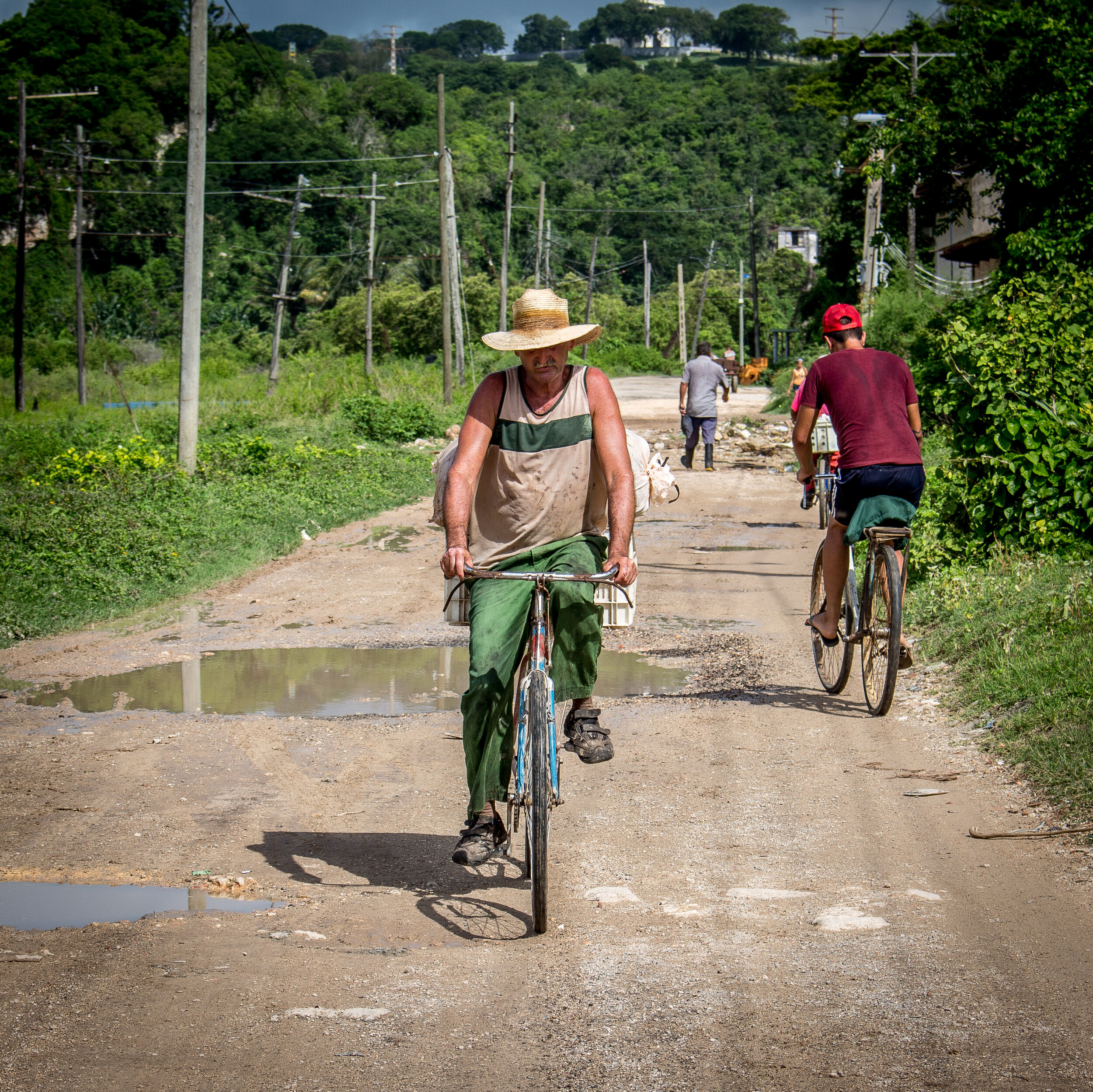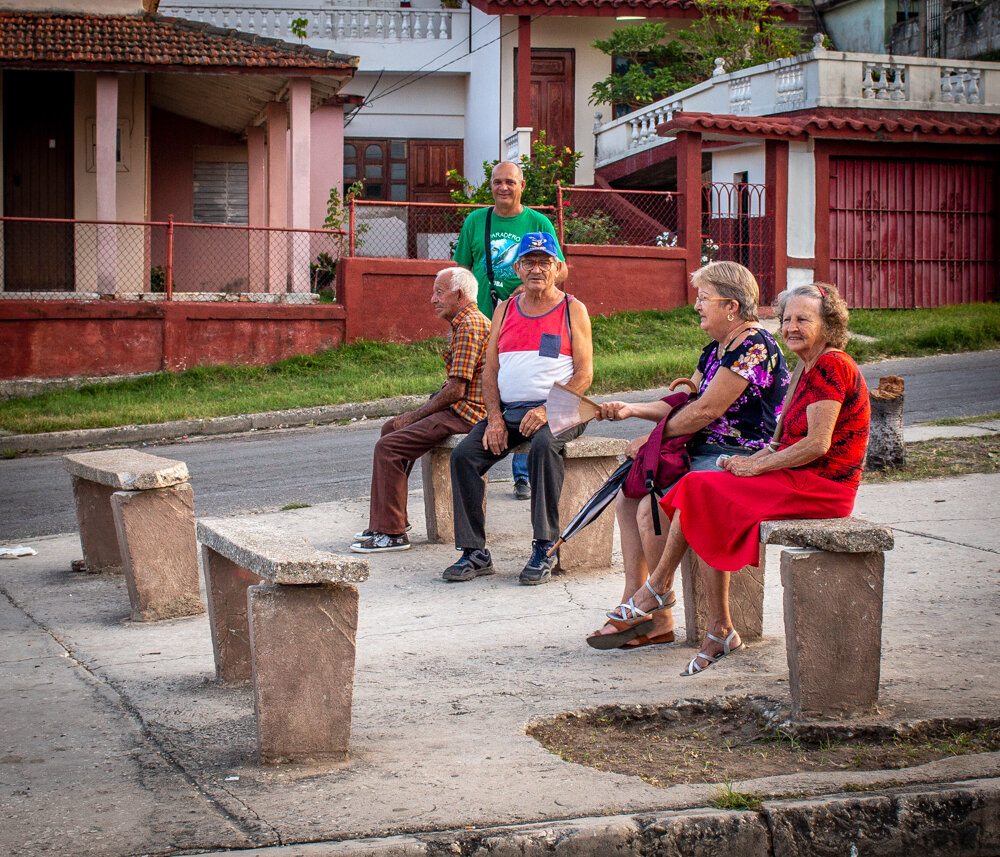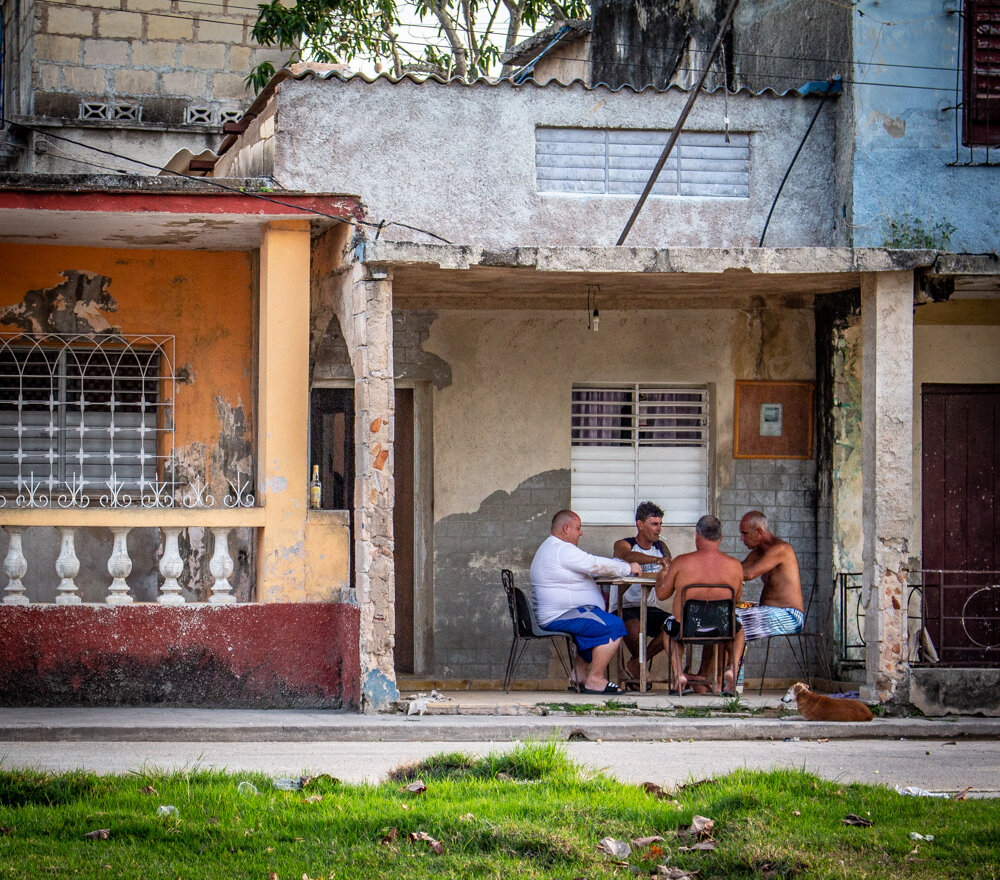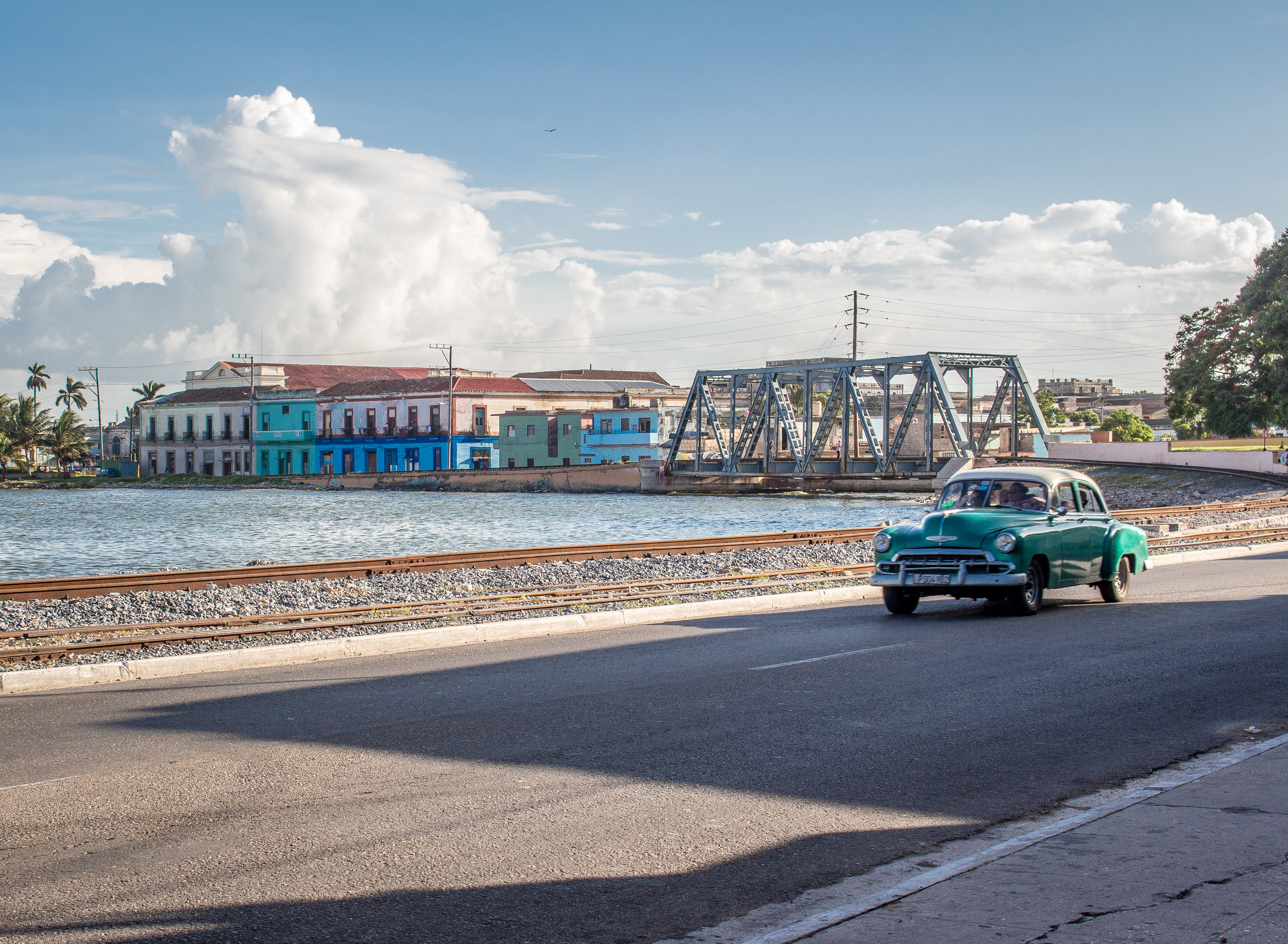
Exploring Versalles - 8 Things You Don’t Want to Miss
One of the original three districts of Matanzas, Versalles drapes over the side of a large mound of earth called Loma de la Cumbre, on the north side of the Bay.
I love this neighborhood – for the views from top, for the interesting things to see on the way up and mostly for all of the compelling history packed into this relatively small area. It’s the perfect combination for a great day of exploring.
In 1693, the original settlement in Matanzas was concentrated in the central area, on a chunk of land sandwiched between Rio Yumurí and Rio San Juan. By the end of the 19th century, the city had sprawled north and south of the two rivers which dissect it today.
The area south of the San Juan became known as Pueblo Nuevo, and the section north of the Yumurí was eventually called Versalles.
The earliest inhabitants in the area were located on a ranch near the bay, in the area now referred to as ‘Chiquirrín’. Those people were later moved to the main part of the city, in order to keep them safe from any cannon fire at nearby Castillo de San Severino. When military strategies changed in the early 19th century, the area became populated again, being preferred by wealthy families because of the stunning views of the bay and the serenity of the location. It also became home to some of the French immigrants who fled Haiti after the Haitian Revolution in the early 1800’s. It didn’t officially become known as Versalles until 1850.
Puente de la Concordia
If you plan to explore this area, here is a list of some of the significant landmarks and features you won’t want to miss:
1. Puente de la Concordia was the first iron bridge constructed in the city. It was inaugurated in 1878 and was built to provide a permanent and reliable conduit from central Matanzas to Versalles over the Yumurí River. Her columns are one of the city’s most recognizable features and the bridge itself has become a symbol of Matanzas.
2. If it’s a Sunday morning and you start your tour early enough, you can be at the Calle Arostegui Street Market (between Calles Navia and Rieche) in time to blend with the locals. This is a great place for mingling, people-watching, and being in the midst of everyday life in action.
Calle Arostegui Street Market
3. Mártires de Goicuría is a former army barracks, originally named Santa Cristina Barracks, built in 1830. Several renovations and name-changes later, it became the site of a rebellion against the Batista regime in April 1956. That rebel attack was a failure and most of the group of revolutionaries were massacred on site. The building was converted to an elementary and secondary school in 1960, and was renamed in honor of those martyrs.
Mártires de Goicuría
4. La Cumbre is at the top of the hill, all the way at the end of Calle Santa Cecilia. You can stand at the top stair and look south, out over the city and Bay, and it will take your breath away. It’s a bit of a workout to get there, but locals who live in la Cumbre make that trek everyday to and from work, school and the market. It’s totally worth it for the view.
La Cumbre
Carolina Tree
5. On your way up Santa Cecilia, you’ll pass by a tiny park in front of the Provincial Hospital, where you’ll find a magnificent tree. Locals tell me it’s a ‘Carolina Tree’ whose beautiful red blooms fall onto the sidewalk making it treacherous to walk at times. Word on the street is that it’s probably 100+ years old. A scientist friend of mine tells me it’s likely a ‘Pseudobombax Ellipticum’ (perhaps they’re the same thing?). What I know for sure is that its gnarled, knobby trunk and mass of exposed roots remind me of something out of the ‘Legend of Sleepy Hollow’ story. It’s not spooky though - I think it may even be magical.
Iglesia Dan Pedro Apóstol
6. Another symbol of the city, Iglesia San Pedro Apóstol is an elegant neoclassic church designed by the same architect as Teatro Sauto - Danielle Dall’Aglio – and constructed between 1867 and 1870. Beautifully restored in 2005, her pink steeples rise so high that she’s like a beacon of sorts, making her easy to spot from a distance. I haven’t been inside this church yet, but I do know tours are available.
7. Although Hershey Station now stands idle, a casualty of Cuba’s crumbling infrastructure, the Hershey Train was a primary means of transportation for locals commuting between Matanzas and Casablanca, Havana. This electric railway was built in 1920 by sugar baron Milton S. Hershey, to service the sugar industry and to transport his workers. It eventually became a tourist attraction as well, for those wanting to experience local transit while travelling through the small towns and villages in the Yumurí Valley. The train itself still runs out of the station in Havana but it currently only comes partway through the Valley, at least until the tracks further east can be repaired. Even though this building is closed, it’s still an interesting area to wander around, including the dirt road that runs parallel to the tracks.
8. Castillo de San Severino is the absolute highlight of Versalles, and it’s a place you’ll want to stop for at least an hour. One of the very few structures still standing from the time the city was founded, it was built between 1693 and 1750 (enduring delays in construction between 1695 and 1737) to protect the Bay of Matanzas and aid in the defense of Havana. It was purposely destroyed in 1762 to prevent it from falling under control of the British, and was reconstructed between 1772 and 1789. It was used as an off-loading point for slaves, and in the 19th century it became a prison for those captured in the fight for independence from Spain. San Severino is included in the World Heritage Site of ‘Old Havana and its Fortifications’, and was declared a national monument in 1979. Today it is a museum not only honoring Matanzas’ military past, but also representing her significant role in the history of slavery as the Museo Nacional de la Ruta del Esclavo. It also has a gallery with AfroCuban art on display. I recommend taking a guide to assist with translation.
The map below should come in handy when you’re planning your route. Make sure to allow time for aimless wandering - you never know what you might discover on your own.
Enjoy!
El Museo Memorial del Morrillo: From Spanish Stronghold to the Frontline of Freedom
It’s like the little brother to Castillo de San Severino.
That’s what the tour guide said in her introduction to this little fort, now simply referred to as ‘El Morrillo’ by the locals.
Originally named Batería de San Felipe del Morrillo, after King Philip V who ruled Spain between 1700 and 1724, this former fort and artillery battery is now an archaeological and historical museum. It’s strategically located on the southeast shore of the Bay of Matanzas at the mouth of the Canimar River, in a neighbourhood also referred to as San Felipe.
El Morrillo was first constructed in the mid-1700’s, starting with a watchtower around 1720, followed by the main building after 1760. It was an integral part of what’s called the ‘defensive belt’ of Matanzas. This ‘belt’ was comprised of four fortifications, including Castillo de San Severino and two others which don’t exist now, built to protect the Bay and the settlement against pirates and hostile invaders. Time, battle and the forces of nature took their toll on the original structure, and by 1807 it required almost a complete overhaul which involved the removal of the original watch-tower and a renovation into its present configuration. It was used as a naval station after the Cuban War of Independence in 1902, up until it was abandoned in 1934.
The most notable event took place here in 1935, when the fort was the site of a historic battle between Cuban soldiers and young revolutionary forces, resulting in the assassinations of two of Cuba’s most resolute freedom-fighters -- Antonio Guiteras Holmes (1906-1935) and Carlos Aponte (1901-1935).
Guiteras, of Cuban-American descent, planned and spearheaded the movement aimed at fighting against tyranny and the pro-imperialist regime in Cuba. Carlos Aponte, a Venezuelan, was recruited to be a member of this group of would-be insurgents lead by Guiteras. The plan was to leave Cuba by boat from the fort under the cover of darkness, and head to Mexico to prepare for the struggle against the government, returning later with soldiers trained, armed and ready for battle.
The boat was delayed, leaving time for the Cuban military to be alerted to the plan and to surround and attack them. The skirmish took place at a nearby hill on the ravine, and both Guiteras and Aponte were shot and killed. Now considered martyrs, a monument has been erected on that exact spot, and their remains are entombed at the fort itself. The old canoe which was used to transport their remains is on display there as well. The museum was declared a national monument in 1979.
I’ve been to el Morrillo twice, and I remember wishing that the state of the exhibits themselves – the lighting and the layout in particular – were a little more conducive to the importance of the artifacts and the stories behind them. The ongoing challenge with Cuba’s museums, especially those outside of major tourist centres, is the shortage of resources required to keep up with the ongoing restoration and conservation of their properties and collections. However, slow-but-steady improvements have continued over the last few years, and I’ve learned that there are more significant efforts being carried out now, in preparation for a return to tourism once the country opens to foreigners again.
Regardless, the best part of the tour on both occasions were the ladies who worked at the site. Acting as guides, they were clearly proud of their heritage, committed to their work and completely engaged in telling the story behind this piece of Cuba’s revolutionary past. As usual, it’s the human element that has the power to either make or break an experience.
It’s easily accessed just off the highway between Matanzas and Varadero, at the end of a street just off the west side of the Canimar Bridge. There is a fantastic view of the Bay from the rocky coastline where it sits, and there’s a tiny beach adjacent to the fort which is perpetually deserted. It’s not Varadero Beach - the water looks a little rocky - but it’s a sweet and quiet spot for a picnic after your tour.
El Morrillo may not be as popular a tourist site as Castillo de San Severino (I couldn’t even find it on Trip Advisor), but with its significant historical value it definitely warrants a visit.
